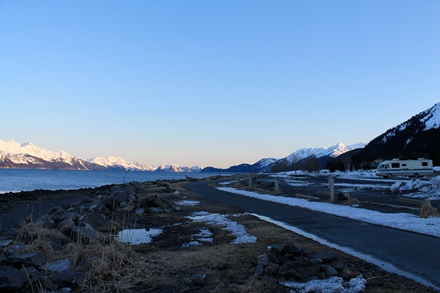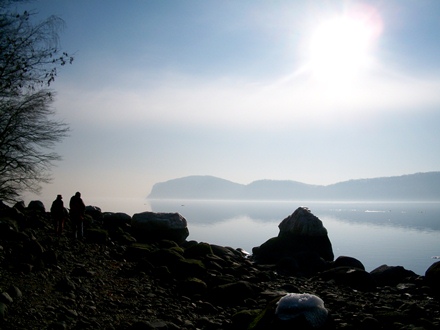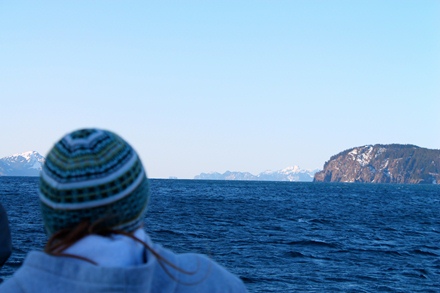I've been in Seward, Alaska for almost three weeks, and the cold, persistent drizzel is finally making me believe everyone who told me not to get used to the constant sunshine of earlier weeks. This is a temperate rainforest, after all, and a cold one. Flying to anchorage was a little bit like watching a time-lapse of the seasons in reverse. Unfurling flowers and a warm, sunny New York afternoon retreated into the cool air of an overcast Seattle evening. Then, turning north a couple days later, I watched snow creep down the mountains until it formed a seamless carpet all the way to the Alaskan shoreline. Since then I've been watching it all again, but forward and in slow motion.

Photo: Max Odland
Seward is the gateway to Kenai Fjords National Park, where I'll spend the next five moths working with the education staff. The most striking thing about the landscape in this area is, well… everything. But the Fjords are, naturally, pretty spectacular. Rugged, snow-covered mountains plunge right into the sea.
The word 'fjord' sometimes gets thrown around when people are talking about any old narrow inlet with steep terrain, but 'fjord' has a very specific scientific meaning: a glacially-carved valley that is subsequently filled by sea water when the glacier retreats. Every fjord has an epic story behind it, which goes something like this. A massive river of ice, thousands of feet thick and advancing under the force of it's own weight, bulldozed the land; it stripped away the soil and carved its way through solid rock. It dug its way, unceasingly, forward and down through the earth until it reached the sea. Eventually, the river of ice began to melt faster than it could replace itself, and began to recede, while the sea flowed in to the newly formed valley in its wake.

Photo: Max Odland
I come from the banks of the Hudson River, which is actually a tidal estuary between its mouth at New York City and Albany, 130 miles to the north. The Hudson River is also (at least in part) a fjord, carved out during the last glacial maximum, 26,000 to 13,000 years ago when glaciers stretched south past New York City. I knew about the glaciation before coming to Seward, but I've never been able to really picture it.
I'd never been able to picture it, that is, until getting on a boat in Resurrection Bay and seeing a landscape that bears the marks of its glacial past so prominently. Looking at rugged U-shaped valleys with glaciers still in place, I could finally picture my own fjord, the Hudson River, at its epic birth.
Moments like that one, when the natural world right in front of me suddenly clicks into place with another aspect of my life, are some of the most powerful moments I've experienced. I'm sure that I'll have many more such moments while I'm here, and I hope that my work with the education department at Kenai Fjords will help many others to have them, as well.

Photo: NPS / Max Odland
